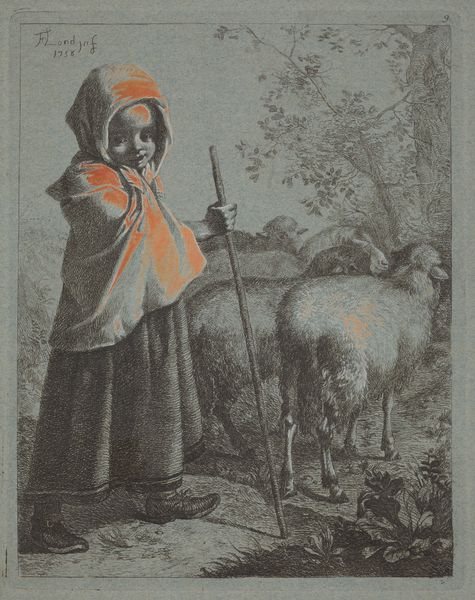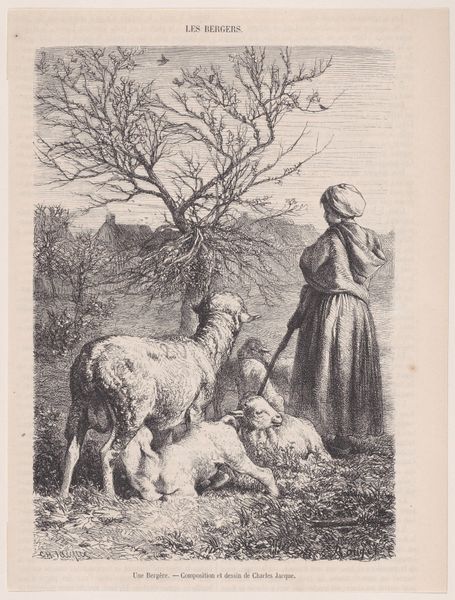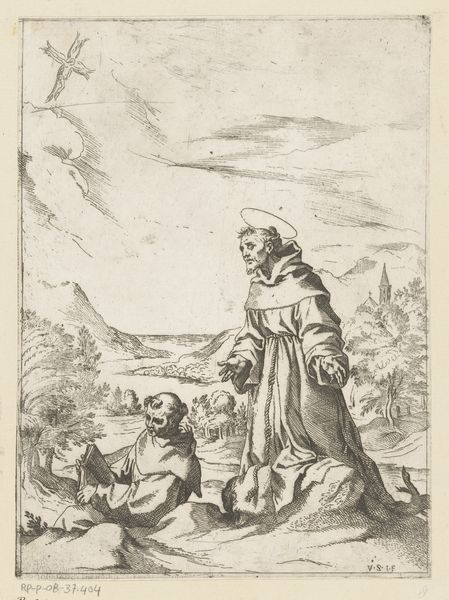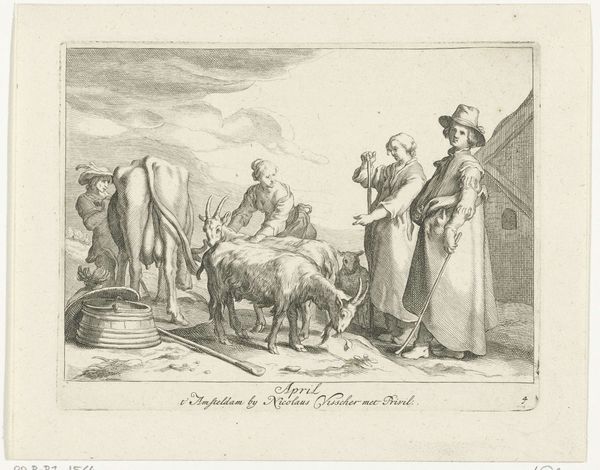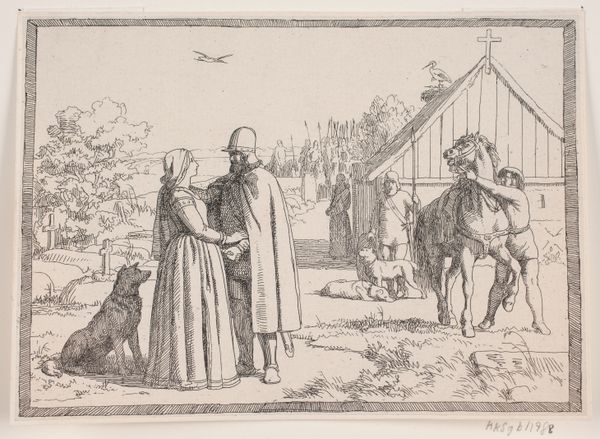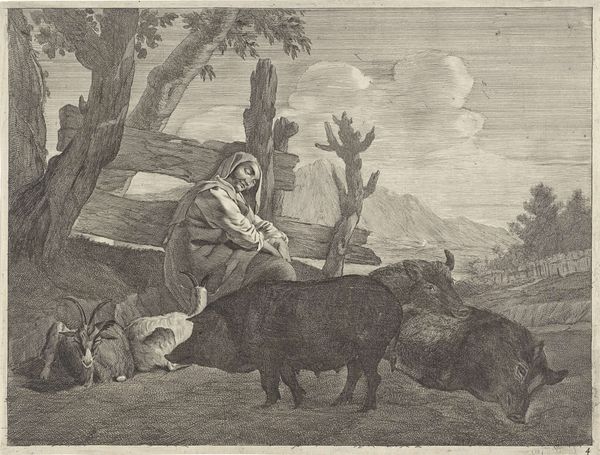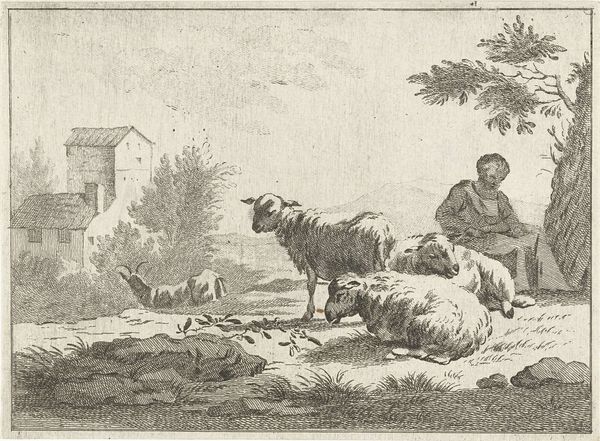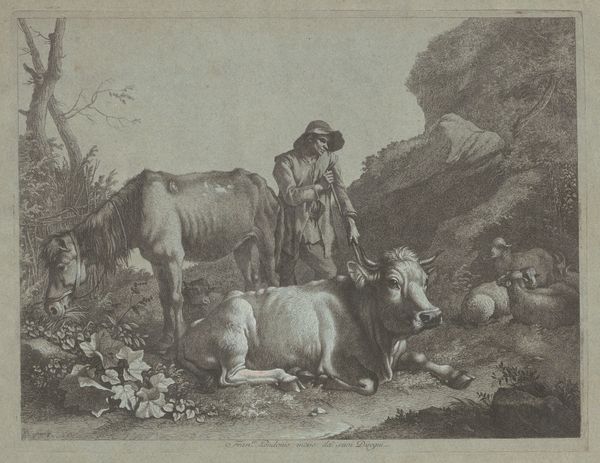
drawing, print, etching
#
drawing
# print
#
etching
#
landscape
#
figuration
#
genre-painting
#
realism
Dimensions: Sheet: 9 15/16 in. × 13 in. (25.3 × 33 cm) Plate: 6 5/16 × 5 1/8 in. (16 × 13 cm)
Copyright: Public Domain
Curator: Before us hangs Charles Jacque's "Little Milkmaids," an etching from 1864 currently residing here at the Metropolitan Museum of Art. It offers an intriguing window into rural life, wouldn’t you agree? Editor: It absolutely does! There's something quite melancholy about it, don't you think? A sort of pensive stillness. The soft grays and whites enhance that mood—almost like a faded memory. It's pastoral, but not idyllic in that idealized way. Curator: Precisely. The "Little Milkmaids" can be examined through the lens of genre painting, but also intersects with the emerging Realist movement. It's important to recognize that Jacque, while sentimental, sought to portray the labor of rural women with a degree of unvarnished authenticity during a time when rural labor was heavily romanticized. Editor: Yes, the stoicism is so present. Look at the girl standing—the folds of her clothing, her gaze fixed downwards. It's not romantic—it’s simply life as it is, imbued with a subtle dignity. What is she thinking about? Is she tired? And then, the other young girl. She seems totally absorbed by something happening on the ground. Curator: It's the contrast between the standing girl and the girl on the ground that is fascinating. The one is burdened by expectations of womanhood while the other remains for a moment yet carefree, though soon to be similarly situated in her duties and social limitations. The scene speaks to a particular class status, visible even in their clothing, don’t you see? Editor: Oh, absolutely. But to me it speaks also of timeless bonds of sisterhood, almost, and an apprenticeship of the mundane. There’s a tenderness there too—they are both rooted in nature and each other’s company, so it also radiates peace. Curator: This makes the symbolism quite dense with interpretive layers. We see a representation of labor, an illustration of a life largely unchanged for centuries, and the dawning recognition of gendered and class expectations. Editor: This piece invites the quiet observer to look into their world, into their dreams and concerns, no? For me it triggers my nostalgia, like I am one of those grazing cows… lost in this gentle, beautiful past. Curator: A world and moment defined by both beauty and its limitations. It is pieces such as this that help us understand that past as deeply intersectional. Editor: Beautifully said.
Comments
No comments
Be the first to comment and join the conversation on the ultimate creative platform.


